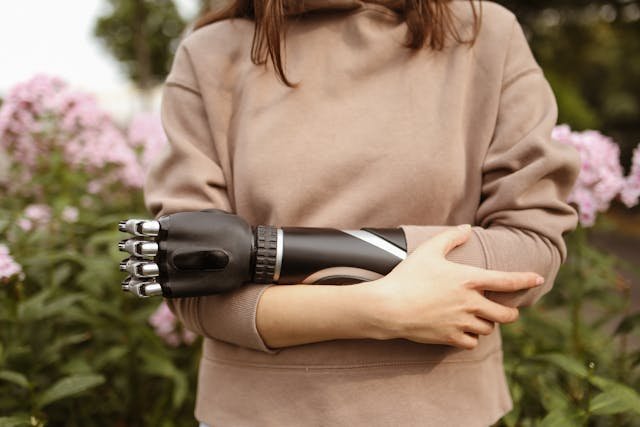When your shoulder, arm, or hand stops working the way it should, it can feel confusing, frustrating, and sometimes even scary. For many people, these problems begin with something called a brachial plexus injury. This type of injury affects the nerves that connect your spine to your arm, making it hard or impossible to move or feel part of your upper limb. While some people heal with time, others need long-term support, including therapy or even prosthetics.
At Robobionics, we’ve helped hundreds of people who are living with the effects of brachial plexus injuries. Whether caused by an accident, birth complication, or medical condition, this type of injury needs careful treatment, patience, and the right kind of support. In this article, we’ll explain what brachial plexus injury really means, why it happens, how it feels, and what you can do to treat it — including the latest options available in India today.
Understanding the Brachial Plexus
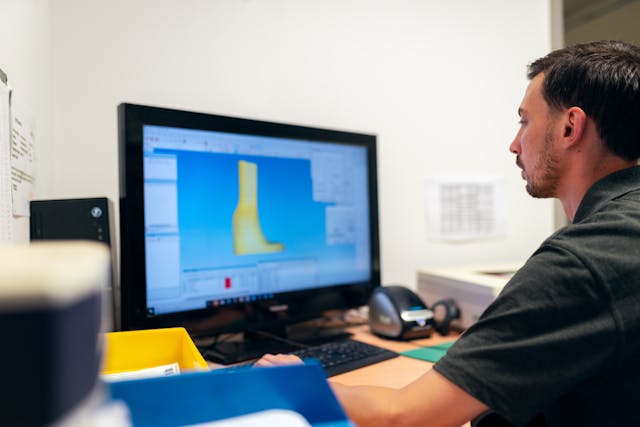
The brachial plexus is a group of nerves that starts in your neck and travels down into your shoulder, arm, and hand. These nerves carry messages from your brain and spinal cord to your muscles. They also carry feeling back from your skin to your brain. This is how you can lift your arm, grip a cup, or feel a touch on your fingertips. When these nerves are damaged, the messages can’t travel properly, and that’s when problems begin.
These nerves are very important, but they are also delicate. They can be stretched, torn, or even pulled completely away from the spinal cord. When that happens, you might lose strength, movement, or feeling in part of your arm or hand. In some cases, only one part of the plexus is injured, and the symptoms are mild. But in more serious cases, the entire plexus is affected, leading to full or near-complete loss of function in the arm.
At Robobionics, we take time to understand exactly how the brachial plexus injury has affected each person. Every case is different, and that means the treatment needs to be just as personal. Whether it’s planning therapy, exploring surgical options, or fitting a prosthetic arm, our team works closely with patients and families to find the right path forward.
Types of Brachial Plexus Injuries
Brachial plexus injuries come in different types, depending on how the nerves were damaged. Some injuries are temporary and heal on their own. Others are more serious and may cause lasting problems. The mildest form is called a stretch injury. This happens when the nerve is pulled but not torn. These injuries are common in contact sports or minor accidents and often recover within weeks or months.
A more serious type is a rupture. This means the nerve has been torn, but not completely detached from the spine. These injuries usually need medical treatment and can take longer to recover. The most severe type is called an avulsion, where the nerve is pulled out from the spinal cord. In these cases, recovery is much harder, and often surgery or a prosthetic device is needed to help restore some function.
At Robobionics, we work with doctors and therapists to support people through each stage of recovery. For milder cases, we assist with strengthening and coordination. For more severe injuries, we explore prosthetic solutions that offer function, grip, and comfort — helping users regain control of their daily life even when nerve recovery is not possible.
Why Early Diagnosis Matters
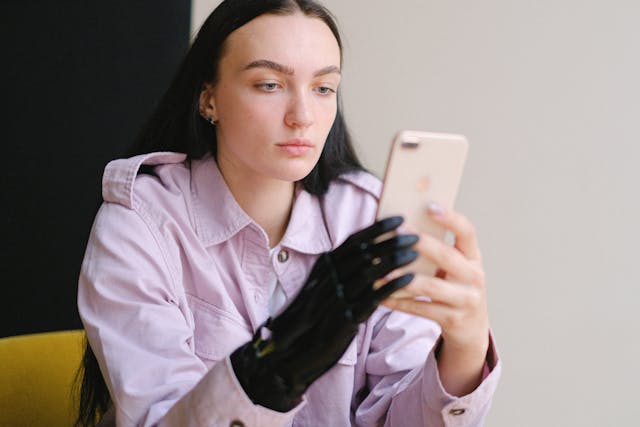
The earlier a brachial plexus injury is diagnosed, the better the chances of a good recovery. If nerve damage is detected quickly, doctors can monitor how the body responds and decide whether therapy, surgery, or other treatments are needed. Waiting too long can lead to further complications, like muscle weakness, joint stiffness, or long-term disability.
Many people don’t realize how serious the injury is at first. They may notice tingling or weakness but hope it will go away on its own. While some minor injuries do heal without help, others get worse over time. That’s why it’s important to see a specialist if your arm or hand doesn’t feel right — especially after a fall, accident, or difficult delivery during childbirth.
Robobionics often supports patients who are referred by neurologists or orthopedic surgeons after their diagnosis. We help assess whether prosthetic support may be helpful and offer early trials that show how assistive devices can make daily life easier. Even if surgery is planned, starting rehab early with the right tools can lead to better long-term outcomes.
What Causes Brachial Plexus Injury?
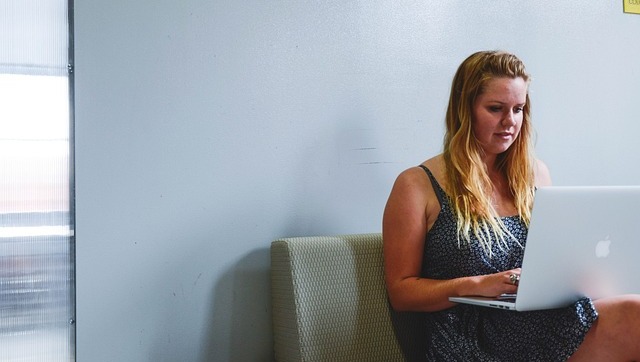
There are many ways a brachial plexus injury can happen. One of the most common causes is trauma — such as from a motorcycle accident, car crash, or fall. In these situations, the shoulder may be pushed down while the neck is pulled in the opposite direction. This stretches or tears the nerves in the brachial plexus. These injuries are often severe and may require both surgery and long-term rehab.
Brachial plexus injuries can also happen during childbirth. This is called obstetric brachial plexus palsy. It occurs when the baby’s shoulder gets stuck during delivery, and the nerves are stretched as the head is pulled out. This type of injury affects newborns and may cause weakness in one arm. Many babies recover on their own, but some need therapy, and a few may benefit from prosthetic support as they grow.
Medical conditions such as tumors, inflammation, or radiation therapy near the neck can also cause brachial plexus damage. In rare cases, the cause may be unknown. Regardless of how the injury happens, the symptoms are usually similar — loss of strength, reduced movement, and sometimes complete paralysis of the shoulder, arm, or hand.
Sports and High-Impact Activities
Athletes who play contact sports like football, wrestling, or rugby are at higher risk for stretch-type brachial plexus injuries. These are sometimes called “stingers” or “burners” because of the sharp, shooting pain they cause down the arm. While these injuries often heal quickly, repeated damage over time can cause long-term problems, including weakness or numbness.
Sports injuries usually affect one side of the body and can be managed with rest, physical therapy, and protection gear. But in some cases, the nerve damage is more severe and doesn’t heal on its own. If this happens, additional treatment may be needed to restore full use of the arm or hand. A delay in care can lead to more permanent disability.
At Robobionics, we support athletes who are recovering from brachial plexus injuries and looking for ways to stay active. Our lightweight, sports-adaptable prosthetics are made to handle movement, sweat, and stress — allowing users to return to physical activity safely and confidently. Whether it’s gripping sports gear or practicing balance, our devices are built to support real-life needs.
Workplace Accidents and Road Injuries
Another major cause of brachial plexus injury is accidents on the road or at the workplace. People who drive two-wheelers are especially at risk in India. In many road accidents, the force of the crash causes sudden stretching of the neck and shoulder, which leads to nerve injury. Workers in jobs that involve lifting heavy loads or operating machines can also suffer from nerve damage if the body is pulled or twisted suddenly.
These types of injuries are often more severe and may involve multiple parts of the body. This means treatment can take longer and often includes a mix of surgery, rehab, and prosthetic care. Recovery depends not only on the injury but also on how quickly help is received and how consistently therapy is followed.
At Robobionics, we work with patients recovering from road and workplace injuries. We understand the emotional and financial pressure that comes with long-term recovery. That’s why we offer affordable, locally designed prosthetic solutions that are easier to service and maintain — helping users get back to work, rebuild confidence, and return to their routines sooner.
Common Symptoms and How They Feel
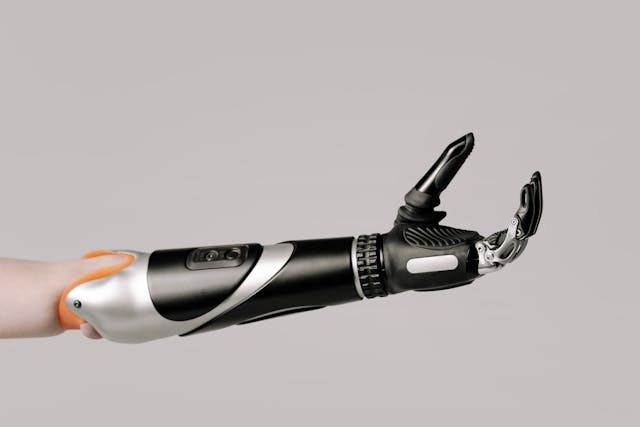
People with brachial plexus injuries experience a wide range of symptoms, depending on which nerves are affected and how badly they are damaged. Some may have mild symptoms like tingling or weakness, while others may lose all movement and sensation in the arm or hand. The symptoms usually appear on one side of the body and can vary throughout the day based on activity and position.
One of the most common symptoms is a heavy or lifeless feeling in the arm. Some people describe their arm as feeling “dead” or not connected to the rest of the body. Others may feel sharp pain that shoots down the arm when they move a certain way. There may also be burning, numbness, or the feeling of pins and needles. These symptoms can be constant or come and go.
At Robobionics, we pay close attention to how symptoms affect daily life. We listen carefully to each person’s experience — what tasks are hardest, what movements are still possible, and what the person hopes to do again. This helps us recommend the best type of support, whether it’s a therapy plan, a trial prosthetic, or a full device built for long-term use.
How Symptoms Affect Daily Life
Living with a brachial plexus injury can make even small tasks feel difficult. You might struggle to button a shirt, hold a pen, or carry a bag. Driving, cooking, or lifting objects may no longer be possible without help. For many people, this creates a loss of independence, which can affect confidence, mental health, and overall quality of life.
In some cases, people learn to adapt by using their other hand or adjusting their posture. But this can lead to overuse injuries, neck and back pain, and more stress on the rest of the body. Without the right support, daily discomfort becomes the norm, and energy levels drop. The earlier this cycle is broken with support, the better the long-term outcome.
Robobionics focuses on restoring function with assistive devices that make everyday tasks easier. Our prosthetic arms are designed to mimic natural movements like gripping, holding, and reaching. We also offer training sessions to help users build strength and coordination, so they can return to their routines with more comfort and confidence.
Emotional and Social Impact
Brachial plexus injury doesn’t just affect the body — it also affects how people feel about themselves. Losing the use of an arm or hand can make someone feel embarrassed, anxious, or withdrawn. Social interactions may become harder, especially if others stare or ask questions. Over time, this can lead to isolation or depression, which slows down recovery even more.
It’s important to talk openly about these feelings. Family members, support groups, and therapists can play a big role in helping someone adjust emotionally. Rebuilding confidence takes time, but it starts with small wins — like being able to eat without help, or write again using a prosthesis. Each achievement brings a sense of control and pride.
At Robobionics, we support the whole person — not just the injury. Our team includes counselors and peer mentors who share real stories and offer practical advice. We also connect users with our larger community, so they can meet others on the same journey. Together, we make recovery not just possible, but empowering.
Treatment and Recovery Options: Therapy, Surgery, and Prosthetics
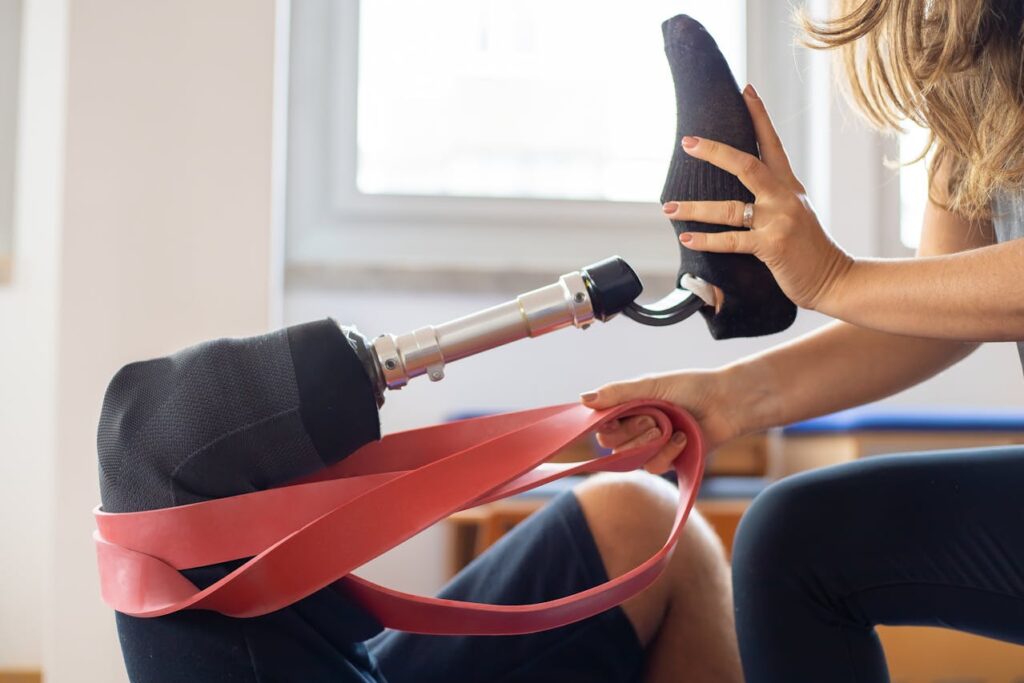
Recovering from a brachial plexus injury often takes time, patience, and a combination of treatments. There is no single solution that works for everyone. Some people improve with physical therapy alone, while others may need surgery. In cases where full recovery isn’t possible, assistive devices like prosthetic arms can help restore independence and function. The right path depends on how serious the injury is, how the body responds, and what the person wants to achieve in their daily life.
Treatment usually begins with non-surgical methods. Doctors often recommend rest, medications, and physiotherapy to reduce inflammation and improve movement. If there’s no improvement after a few months, surgery might be needed to repair or reconnect the nerves. For those who cannot regain full use of the arm or hand, prosthetic support can help bridge the gap — allowing people to perform essential tasks more easily and safely.
At Robobionics, we work closely with medical teams, therapists, and families to help people choose the right recovery plan. Whether you’re at the beginning of your journey or exploring options after years of living with an injury, our prosthetic solutions are designed to adapt to your body and your goals — giving you more control and more confidence.
Physical Therapy and Home Exercises
Therapy plays a big role in helping the arm recover strength, flexibility, and movement. For milder injuries, regular therapy may be enough to bring back function. Exercises are focused on improving joint mobility, muscle activity, and nerve response. Over time, the goal is to reduce pain, improve range of motion, and increase strength so that daily tasks become easier.
Even in more serious cases, therapy is still important. It helps prevent stiffness in the joints and keeps muscles active. A therapist may also teach you new ways to move or hold objects that feel safer and more natural. The key is to start early and be consistent. Progress may be slow at first, but every session helps build a stronger foundation for recovery.
Robobionics partners with rehabilitation experts across India who understand how brachial plexus injuries affect movement. We offer home-based exercise routines and gamified rehab tools that make therapy more engaging. These programs are easy to follow and can be adjusted as your ability improves. With the right guidance, therapy doesn’t have to feel like a chore — it becomes a part of your recovery rhythm.
When Surgery Is Considered
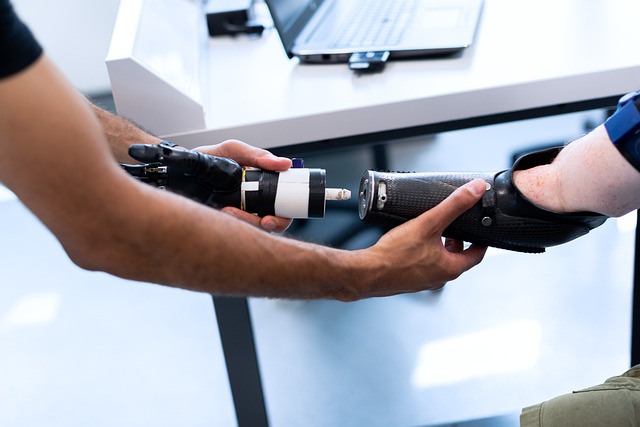
Surgery is usually recommended when there’s no improvement after three to six months. The decision depends on the type and severity of the injury. If the nerve has been completely torn or avulsed, surgery may be the only way to reconnect it. Procedures may include nerve grafts, nerve transfers, or even muscle transfers to restore movement. Each surgery has its own recovery time and outcome.
It’s important to understand that surgery does not guarantee full recovery. In some cases, only partial movement returns, and it may take months or even years to see results. Surgery also requires follow-up therapy to train the body and brain to use the repaired nerve pathways. That’s why doctors and patients must carefully weigh the risks and benefits before deciding.
At Robobionics, we often support people who are preparing for surgery or recovering afterward. In both cases, prosthetics can help support daily function during the healing period. Even if you regain some natural movement, a prosthetic can make life easier while the body adjusts. We also offer pre-surgical consultations to help patients understand all their options before taking the next step.
How Prosthetics Fit Into the Recovery Plan
For some people with brachial plexus injuries, full recovery isn’t possible. Even after therapy or surgery, the arm may remain weak or unusable. In these cases, prosthetic devices can restore some of the lost function. A well-designed prosthetic arm can help you grip, lift, hold, and stabilize objects — allowing you to regain independence and perform daily activities more confidently.
Prosthetic support can begin even while you’re still recovering. A lightweight, functional arm can help reduce strain on the unaffected side, improve posture, and support better balance. For many people, this makes it easier to go back to work, care for their families, and feel more capable in social situations. Some prosthetic arms are even EMG-controlled, meaning they respond to muscle signals — allowing for smoother, more natural movement.
At Robobionics, we offer a range of prosthetic options, including our advanced Grippy™ bionic hand. Each device is custom-fitted and carefully designed for your comfort, goals, and lifestyle. Our team provides training, follow-up support, and maintenance to ensure your device continues to serve you well. Whether you’re new to prosthetics or ready for an upgrade, we’re here to help you take the next step forward.
Conclusion: Moving Forward with Strength and Support
A brachial plexus injury can turn life in a new direction — sometimes slowly, sometimes all at once. Whether it’s the result of an accident, a difficult birth, or an unexpected medical condition, the effects are real and deeply personal. But while the road to recovery may feel uncertain at times, it’s important to remember that you don’t have to walk it alone. With the right care, the right tools, and the right mindset, recovery becomes not just possible — it becomes powerful.
Understanding the injury is the first step. Acting early, exploring therapy, and getting the right medical advice lays the foundation. If movement doesn’t return as expected, that doesn’t mean the journey ends. Prosthetic technology today — especially the kind we build at Robobionics — gives people a chance to take back control, regain independence, and feel whole again. From basic support to advanced EMG-controlled arms, we’re building solutions for real life, right here in India.



